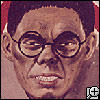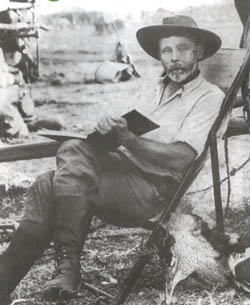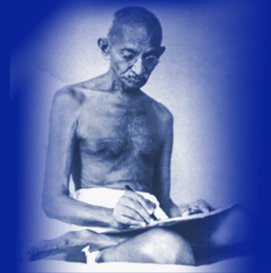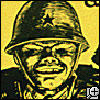
This is coolbert:
This particular blog entry is devoted to Colonel Masonobu Tsuji. The famous/infamous Japanese military officer whose life before, during, and after World War Two [WW2] could easily be the history of Japan during the same period. Tsuji has been mentioned in previous blog entries. Where ever Japan
WAS at this period in time
WAS also the place where Tsuji
WAS. China, Manchuria, Mongolia, Malaya, Philippines, South Pacific, Burma, Indo-China, Japan, and back to Indo-China.
[My comments in bold]
Tsuji was a man of promise from an early age??"Tsuji was born in Ishikawa Prefecture on October 11, 1900,
Attached to Army General Staff May 1921. Graduated War College (more advanced level evidently than Military Academy) November 1924."
"About 1930 he attended the War University as a lieutenant, where he quarreled, he said, with his instructors on matters of military tactics. Studied Chinese, though indifferently, and at some time studied Russian to about the same degree of enthusiasm."
This is a very unusual pattern of advancement, at least by western standards. The normal sequence progression for an officer would be for service as first a platoon leader, then a company executive officer, and then a company commander. And then, if the officer was considered to be promising, would attend Staff School and then be given staff positions. Tsuji seems to have short-circuited the whole process, being a staff officer at the age of 21??!! Perhaps the Japanese had a different approach??!!Tsuji was a man with contacts at the highest level of Japanese society."Perhaps it was here that he was, as he later claimed, a classmate of Prince Chichibu, the Emperor's younger brother."
"he was an aide to the Emperor's younger brother, Prince Misaka"
"He recruited friends and acolytes in China"
"he had mysterious sources of power and probably direct access to Tojo;"
Once again, that a man of such junior rank would have such high level contacts is somewhat unusual. It seems that Tsuji from the get-go was an aspiring officer and made these contacts and friendships with an eye to the future.Tsuji was a man who engaged in intrigue against his brother officers."The Kodo group believed that the entire affair had been devised as a trap by Tsuji. In any event, he stored up influence where it mattered: with such future commanders as Tojo, Renya Mutaguchi, and Tomioka Yamashita."
"He had also turned one staff officer over to the kempeitai for "corruption," as a result of which the officer committed suicide."
"Kawaguchi realized that Tsuji had never told the commander about the change in plans. Kawaguchi responded that he would have one battalion in position, whereupon he was replaced--Tsuji's intention, apparently. Tsuji called 17th Army Hq and told his colleague Col Konuma that "Kawaguchi refused to advance, and the division commander relieved him of his command."
"Kawaguchi thought that Tsuji agreed and that the change in plans would be passed up to General Murayama, but there was some mixup and Murayama wasn't informed. When Murayama found that Kawaguchi wasn't where he was supposed to be, sacked him on the spot. Kawaguchi believed Tsuji had deliberately betrayed him and never forgave him."
"He [Kawaguchi] nursed more hatred for his countryman Tsuji than for the enemy."
"he carried out the functions of a government spy."
"Not unexpectedly he was detested throughout the entire Japanese Army;"
And yet again, that an officer would behave in such a manner toward his brother officers is very unusual. A man behaving in such a manner usually becomes a pariah.Tsuji also intrigued at the international and Japanese governmental level."One a "gangland-style assault in Tokyo," the other a railroad bombing as with Marshal Chang. "The latter plan was devised by a lieutenant colonel named Masanobu Tsuji, already an idol of the most radical young officers. A chauvinist of the first water, he was determined to thwart a summit meeting that was destined to end in a disgraceful peace."
"Identified as one of the "officers responsible for provoking the disastrous Nomonhan incident in 1939."
Tsuji was apparently heavily involved with "nationalist" elements that wanted a militaristic regime in Japan. They got what they wanted. Nomonhan [Khalkin Gol] was the clash between Soviet forces and the Japanese.Tsuji was a man whose appearance epitomized the "yellow peril"."wears the round-lensed Oriental spectacles that were so savagely caricatured in American propaganda cartoons during the Pacific War."
"his spectacles reflect the light and magnify his Oriental eyefolds, giving him a cruel aspect that would have satisfied Americans devotees of "Yellow Peril" books, movies, and comics."
Click
here to see a picture of Tsuji.
Click also
here to see another picture of Tsuji.
The caricature was the big buck teeth, and the slitted slanty eyes showing from behind thick glasses. Tsuji does not seem to resemble this.Tsuji was a hard-core military man, forsaking familial responsibilities."By his own account, when in his thirties "I . . . divorced my wife and left my (two) children to participate in the movement for national reformation,"
"Despite his occasional visits to Japan, he evidently never saw his family. During the war, his wife had to go to work in a garment factory and send his eldest son to work in a bakery shop, while two younger children were put in an orphanage."
Tsuji divorced his family only in a figurative sense, not a literal. He wanted to devote himself entirely to his military career without any distraction of family!!Tsuji was an operational planner of extraordinary ability."He was often at the front giving advice and devising fresh plans"
"Tsuji became a staff officer in charge of operations and planning under Lt-General Tomoyuki Yamashita. He applied himself diligently and concluded that Singapore could not be defended from the rear, that British fighter strength was much weaker than announced, that British land and sea forces had only been reinforced and only half the 80,000 or so forces were 'Europeans'"
"Tsuji persuaded his superiors in Tokyo to send him to Rabaul as an observer. As usual, he soon became a go-between, arguing the army's need for a full-scale relief expedition to Admiral Yamamoto aboard the flagship Yamato.
The Japanese assault force consisted of 5,600 infantry plus support troops, with Tsuji personally directing operations."
"but where the business of fighting was concerned, he was invariably right."
"Tsuji was one of the most extraordinary men in the entire Japanese army. . . . Tsuji was a man of extraordinary ingenuity and courage;"
Tsuji was the chief of operations for the Malayan campaign that defeated the British.
Tsuji was a war criminal."In Singapore, "five thousand Chinese had been murdered largely at his instigation for 'supporting' British colonialism."
"Tsuji believed that all prisoners should be executed, the Americans because they were colonialists and the Filipinos because they had betrayed their fellow Asians."
"But other officers, whose names for good reason have vanished from the record, carried out Tsuji's oral instructions, which were reinforced by the press."
"But Imperial Headquarters was so insistence about the execution of Santos." Kawaguchi: "Whom do you mean by Imperial Headquarters?" Hayashi: "It was Tsuji."
"The decree, as the Chinese soon discovered, was part of Operation Clean-up (called Sook-Ching). It had been planned by Lieutenant-Colonel Tsuji, officer in charge of planning and action. The 25th Army intended to move to Sumatra. Only the Defense Force would be left behind to hold Singapore. Tsuji argued that before they went the 25th Army should clean up all anti-Japanese elements including the Chinese volunteers who fought so tenaciously against the Japanese, all members of the China Relief Fund, and other anti-Japanese organizations. The most brutal massacre for weeding out and exterminating anti-Japanese elements began in Singapore."
"As a result, many thousands of Chinese men lost their lives during the ruthless Operation Clean-up. But today the official figure said only several thousands died while many sources indicate the death toll may be as high as 50,000. At the War Crime Trial in 1947, the Japanese defendants admitted to killing only 5,000 Chinese civilians.
A.D. 1942 - Singapore (Operation Sook Ching)
70,699 Chinese tortured and/or killed by Japanese
Kempeitai in Colonel Tsuji Masanobu's "Sook Ching" or
Purification/Ethnic Cleansing in reprisals for overseas
Chinese support of mainland China against the Japanese
invasion."
"This is extraordinary, as the massacre in Singapore ranks third to those at Nanking and Manila."
"Intelligence Marred by Cruelty
Mamoru Shinozaki, who is remembered for saving many Chinese lives in Singapore during a Chinese purge, names Tsuji as "the one who made plans for the Chinese massacre." Sook Ching or Shuku Sei (purge through purification) operation was planned by the Operation Staff of the 25th Army which Tsuji headed and carried out under an order issued in the name of General Yamashita. The directive was transmitted from Yamashita through the Chief of Staff Major General Kawamura Saburo, Commander of Syonan-To garrison, who delegated the task to the Kempetai. Chinese males between the ages of 18 and 50 were to report to mass-screening centres. Some were taken away and never seen again. About 6,000 Chinese were killed in the large-scale purge (the Chinese version puts the figure at 50,000)."
"The 1946-1963 file of Colonel Tsuji Masanobu, who eluded capture and trial for alleged crimes against the Chinese at Singapore, and for mistreatment of Allied POWs. After returning to Japan, allegedly in disguise in 1948, but not identified until 1950"
"he was cruel and barbarous;"
Cruel and barbarous. That is an apt description. Atrocities carried out without a qualm and at the behest of Tsuji that met his criteria for proper treatment of "enemies" of the Empire. The ethnic Chinese of Malaya DID aid and assist the British, whereas the ethnic Malay did not. This group of ethnic Chinese in Malaya had a strong antipathy for the Japanese and this greatly provoked persons such as Tsuji. And Tsuji did escape war crimes prosecution totally. In 1947 Hirohito gave blanket amnesty to all Japanese that had committed war crimes. And in the 1950, SCAP [Supreme Command Allied Powers], the occupying power in Japan, ended all war crimes trials of Japanese as part of a bargain for Japanese support during the Korean War??!!Tsuji was a courageous military man."My body carries the bullets of five countries--Russian from Nomonhan, American from Guadalcanal, Chinese from Shanghai, British from Burma, and Austrian [sic] from the Philippines." He boasted that no enemy bullet could kill him, and that his lines of communication went back to General Tojo and perhaps even to the Deity."
"By his own account, Tsuji was badly wounded in the Burma campaign, and this may have been the occasion for the medal."
"wounded seven times and carried "more than 30 odd pieces of shrapnel, both large and small" in his body."
"he declared himself immune to death by enemy action,"
Tsuji was undeniably a brave man. Exposed himself to fire and was wounded on a number of occasions. He DID NOT just stay in headquarters and make plans that others carried out.Tsuji was a homosexual??"(Wherever Tsuji traveled, he seemed to find a "pure- hearted" youngster who wept upon parting from him. Whether this was a literary cliche or a reference to homosexual liaisons, I can't decide.)"
"even obtains "a fine lovable young soldier" as his orderly."
"Met another Japanese, "a pure hearted youth" deciphering Chinese communist codes."
"bade goodbye to his orderly, who of course wept bitter tears,"
This is just not proven. Raises eyebrows, much as it did for T.E. Lawrence and the rumors that existed in the same fashion. Perhaps this is a lot of get-up by the many enemies of Tsuji to defame the man? Tsuji was a man who eschewed and hated the fleshpots."These headquarters officers are all rotten. They are only working for their medals. Every night they go to parties and play with geishas. Since the China Incident, all the military have gone bad. They hate me because I know all this and speak out."
"As the story was told, he had once burned down a geisha house with his fellow officers inside. Either through loyalty to his wife and children, or out of a more generalized misogyny or perhaps homosexuality, had nothing to do with women when he was campaigning."
"He was offended by the sight of "comfort women," there and at the nightly parties. In his puritan fashion, he set about to clean them up."
Since Tsuji was a man that had "divorced" his family for the duration of the war at least, he saw no need for others NOT to do the same. Devote all your energies for the war effort and the Emperor is how Tsuji saw things. He expected and was high disappointed when others did not reciprocate his views.Tsuji was a cannibal."Tsuji and some other staff officers had eaten the liver of an enemy pilot.
Instead, Parker was killed while they were at dinner, "while trying to escape." It was then and there, in this version, that the pilot's liver was brought in.
"The more we consume," Tsuji proclaimed, "the more we shall be inspired by a hostile spirit towards the enemy." Some officers merely toyed with their portions, some ate a bit and spit it out. Tsuji called them cowards and ate until his own portion was finished."
"especially Major Abe and Colonel Tsuji. A Captain Lily of the U.S. Army Military Police turned up to investigate the incident of cannibalism in China, and the two officers feared that they would be charged with Lieutenant Parker's murder."
The eating of the liver of your enemy is said to imbue the diner with the courage and virtues of the vanquished. I do not think this is something that is native to Japanese culture. Tsuji may have picked this up while on sojorn in the South Pacific. Natives there are confirmed cannibals who engage in eating their enemies. It seems that Parker, the American, was a pilot whose plane was shot down. Parker was captured, executed, prepared and eaten!!Tsuji was a spy master."After Malaya, Tsuji was in Burma. When Japan surrendered, he was asked by the Japanese authorities to "disappear". He wandered around Southeast Asia in disguise"
"Brilliant Intelligence Officer
One of the officers assigned to the Japanese army research unit in Taiwan to plan the invasion of Malaya and Singapore. He was tasked with collecting in six months all data on tropical warfare, from organizing army corps, equipment, campaign direction, military strategy, tactics and geography. Japanese nationals traveling and living in Malaya and Singapore provided useful information."
"As long as the Chinese Nationalists felt that a man was useful to them, they detained and used him."
Refers to his outfit as Third Research Group, aka The Bamboo Shelter. It was, he says, "a miserable intelligence unit."
"Our treatment was equivalent to detention."
"He is put to work for the National Defense Department Section [intelligence] Comprehensive Study Group. On Aug 4 moved to former Japanese Supreme Hq!"
"Tsuji's position now "midway between that of a prisoner and a guest." Despite this setback, he goes to work at the Military Control Bureau's propaganda department"
"Says a band of seven young "special attack" (kamikaze) officers were in Thailand, disguised as priests while spying for the Japanese authorities; they "insisted on joining me."
"I'd like you to go underground in China and open up a new way for the future of Asia."
"He decides to go underground in China."
"On 22 Oct Tsuji decided to make his own reconnaissance of Malaya"
As has been mentioned previously, Tsuji was the operational planner for the Malayan campaign. Not only was he the operations planner, but he had also been the intelligence officer in charge of gathering all available intelligence regarding the Malay peninsula and the British forces defending same. It does appear that at the end of the war, Tsuji and other selected officers went undercover to pose as Buddhist monks in China and throughout all of Southeast Asia. The purpose was to set up espionage rings for the FUTURE. For a losing power to do so is not unheard of. Gehlen the German intelligence officer, volunteered his espionage network in eastern Europe to the CIA at the end of WW2. From what is described, it seems a lot of Tsuji's work was done for the Nationalist Chinese fighting the communist forces under Mao, with an eye to a future conflict with the Soviet Union!!Tsuji was a politician."subsequently went into politics."
"Elected to Diet 1952 "and twice thereafter"; wrote numerous books & articles."
In Japan, there is a small party of avid nationalists. A political party that advocates a return to the rule of the military and an adherence to the ancient samurai traditions. This party also has strong ties to the Yakuza [Japanese Mafia]. I would not be one bit surprised if Tsuji was a representative of this party.Tsuji was a man of strong opinions."No respecter of persons he would advise his superiors without hesitation; often he would give orders in their name without the slightest authority."
"Col. Tsuji also wrote an article in the 1950's recommending Japan acquire
nuclear weapons!"
"he ranked the fighting qualities of all the armies he had opposed. The Japanese of course were highest, with one Japanese soldier the equivalent of 10 Chinese--the army he rated second, given equivalence in equipment and training. Following in order were 3) Russians, 4) Ghurkas in British service, 5) Americans, 6) Australians, 7) Indians in British service, 8) British, 9) Filipinos, 10) Burmese, 11) Thai, 12) Vietnamese, and 13) French."
"Colonel Tsuji Masanobu, later explained that "our candid ideas at the time were that the Americans, being merchants, would not continue for long with an unprofitable war."[6]"
This rating scheme of Tsuji's must have made based upon observations made during th earliest days of the war. At the end of the war, De Puy rates that one American soldier was equal to four Japanese, at brigade and higher echelon. One American soldier was able to accomplish as much as four Japanese, due to a variety of factors. This was not the case at the start of the war! Placing the Chinese second only to the Japanese is also a surprise. The fighting reputation for the Chinese army during WW2 was not that great. Pretty good, sometimes, on the defense, but not good on the offense. Often time preferring to advance on a Japanese position and then dig in and defend, waiting for a Japanese attack. Tsuji does give a pretty good rating for American troops, at least we can give him that.Tsuji was a prolific author."The convoys sailed on 4 Dec, each man religiously studying the pamphlet Tsuji had written,"
"Wrote another report on likelihood of WWIII, a manual on cold- weather operations, a basic training manual, a manual on "strategic uses of topography," and lectured on WWIII to Defense Dept officers. Spent six months translating Japanese manual of 1924 about fighting Soviet Union in Siberia."
"wrote numerous books & articles."
"a 32-page manual entitled "Read This Alone -- And The War Can Be Won." This manual was distributed by the Japanese Imperial Army Headquarters to all troops heading for the combat zones in southeast Asia. The detailed instructions on how to treat the civilians as well as the American, British, and Dutch colonialists give chilling insights to the history of the war"
"He then wrote a number of books on the Japanese war campaign in Malaya and Singapore, including "Japan's Greatest Victory, Britain's Worst Defeat: The Capture of Singapore, 1942." He stopped at the fall of Singapore, conveniently excluding the purges he had taken masterminded."
"Tsuji published best selling accounts of his wartime exploits and assumed leadership of the East Asia League."
"In Oct 1947 began work translating a multi-volume Japanese manual on Soviet war potential. Submitted resignation Feb 1948 and in April granted two months' leave."
Tsuji seems to have been a man who had a very high opinion of himself and did not hesitate to make that fact known to others.Tsuji was a man whose career inspired others [is this good or bad??!!]."Tsuji was a close friend of Kitta, and several post war nationalist leaders, notably Park Chung Hee [South Korea] and Sukarno [Indonesia], claimed inspiration from him."
This is most interesting. Years ago now, Park Chung Hee was the strongman ruler of South Korea. Had been a general officer in the South Korean army before assuming role of President of ROK. And also a member of the collaborationist Korean forces that served with the Japanese during WW2 [many brutal guards on the infamous Burma railroad were Korean nationals.] At the time, all the Korean Generals familiar to American officers stationed in South Korea were known to the Americans by a nickname, each and every Korean general having their own peculiar nickname. All except one. Park. He was a man no one, and I mean no one, ever took lightly. A man who the greatest possible respect was shown to. Having Tsuji as an inspiration seems to explain a lot, doesn't it??Tsuji was a CIA operative??"Bergamini (1046) also confirms Masanobu's disappearance. He speculates he
may have still been alive (this, in 1971) and a CIA agent in Hanoi, after his disappearance Laos. However, given his inside knowledge about Dulles during the new JFK admin., a real potential blackmail threat that Dulles didn't need--and given his continued contact with CIA, I now suspect that Dulles had him killed there in Laos in 1961."
It may be very well that Tsuji offered the services of his agents to the CIA in return for something that he valued. What that would be I just cannot say. Having established a spy ring in SE Asia at the end of the war, Tsuji could offer something to the CIA that they desperately needed at the time, ready-made agents in an area of the world that suddenly became of the greatest importance to American interests. Tsuji, appearing in Saigon in 1961 and then suddenly disappearing could be related to this.Tsuji was a Viet Cong/NVA commander??"serving as an Operations Staff officer under Vo Nguyen Giap. When one considers the ruthless and brilliance of the North Vietnamese operations, the hand of Masanobu Tsuji can be seen clearly."
[I posed the question of Japanese advisors to the Vietnamese to a Vietnamese professor at Harvard. She was very skeptical, given the hatreds left over from the Japanese occupation.]"
Could it be that Tsuji offered his services to General Giap and this offer was accepted? Sounds bizarre and far-fetched. But what is it? Fact is stranger than fiction!Tsuji was a man who disappeared under mysterious circumstances."Tsuji mysteriously disappeared while traveling through Southeast Asia. This time, his disappearance in Vietnam in 1961 was real"
"Even after he returned to public life in Japan, writing several books about the war, "he still lived mysteriously, traveling on secret missions, and in April, 1961, he went to Vietnam,"
It may here that he did disappear, as part of the activation under his control of a spy ring in SE Asia. Not for anyone to know about, disappearing and not emerging in the same persona. Perhaps led the rest of his life as one who has adopted a new guise and life.coolbert.
Labels: Japan











